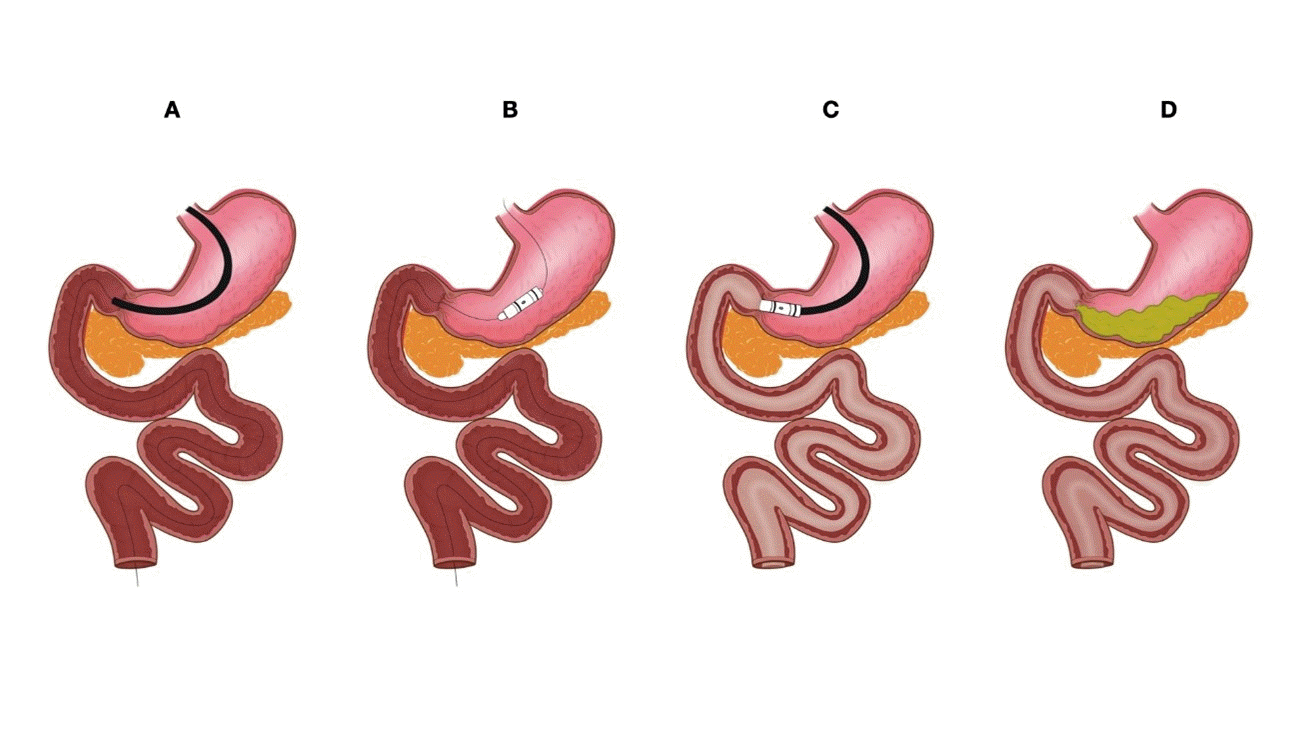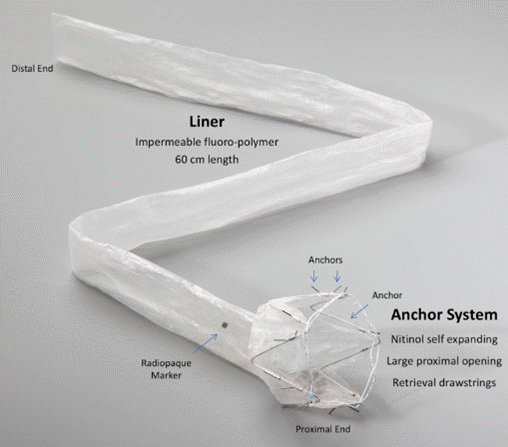2. Michaelidou M, Pappachan JM, Jeeyavudeen MS. Management of diabesity: current concepts. World J Diabetes. 2023; 14:396–411.

3. Na HK, De Moura DT; Study Group for Endoscopic Bariatric and Metabolic Therapies of the Korean Society of Gastrointestinal Endoscopy. Various novel and emerging technologies in endoscopic bariatric and metabolic treatments. Clin Endosc. 2021; 54:25–31.

4. Cambi MP, Baretta GA, Magro DO, et al. Multidisciplinary approach for weight regain-how to manage this challenging condition: an expert review. Obes Surg. 2021; 31:1290–1303.

5. Colquitt JL, Pickett K, Loveman E, et al. Surgery for weight loss in adults. Cochrane Database Syst Rev. 2014; 2014:CD003641.

6. Nguyen NT, Masoomi H, Magno CP, et al. Trends in use of bariatric surgery, 2003-2008. J Am Coll Surg. 2011; 213:261–266.

7. Tatarian T, Rona KA, Shin DH, et al. Evolving procedural options for the treatment of obesity. Curr Probl Surg. 2020; 57:100742.

8. Günthert SJ, Aksan A, Schröder O, et al. Glycemic control and BMI changes after endoscopic implantation of a duodenojejunal bypass liner compared with laparoscopic Roux-en-Y gastric bypass surgery: a propensity score matching analysis. Surg Endosc. 2022; 36:5979–5985.

9. Betzel B, Cooiman MI, Aarts EO, et al. Clinical follow-up on weight loss, glycemic control, and safety aspects of 24 months of duodenal-jejunal bypass liner implantation. Surg Endosc. 2020; 34:209–215.

10. Simons M, Sharaiha RZ. Updates in metabolic bariatric endoscopy. Dig Endosc. 2023; 36:107–115.

11. Shenoy A, Schulman AR. Advances in endobariatrics: past, present, and future. Gastroenterol Rep (Oxf). 2023; 11:goad043.

12. Dave N, Dawod E, Simmons OL. Endobariatrics: a still underutilized weight loss tool. Curr Treat Options Gastroenterol. 2023; 21:172–184.

13. McCarty TR, Thompson CC. The current state of bariatric endoscopy. Dig Endosc. 2021; 33:321–334.

14. Campbell JE, Drucker DJ. Pharmacology, physiology, and mechanisms of incretin hormone action. Cell Metab. 2013; 17:819–837.

15. Chen JH, Yu ZH, Liu QF, et al. Research progress of duodenal-jejunal bypass liner in the treatment of obesity and type 2 diabetes mellitus. Diabetes Metab Syndr Obes. 2022; 15:3319–3327.

16. Jirapinyo P, Haas AV, Thompson CC. Effect of the duodenal-jejunal bypass liner on glycemic control in patients with type 2 diabetes with obesity: a meta-analysis with secondary analysis on weight loss and hormonal changes. Diabetes Care. 2018; 41:1106–1115.

17. de Moura EG, Lopes GS, Martins BC, et al. Effects of duodenal-jejunal bypass liner (EndoBarrier®) on gastric emptying in obese and type 2 diabetic patients. Obes Surg. 2015; 25:1618–1625.

18. Yvamoto EY, de Moura DT, Proença IM, et al. The effectiveness and safety of the duodenal-jejunal bypass liner (DJBL) for the management of obesity and glycaemic control: a systematic review and meta-analysis of randomized controlled trials. Obes Surg. 2023; 33:585–599.

19. Jirapinyo P, de Moura DT, Horton LC, et al. Effect of aspiration therapy on obesity-related comorbidities: systematic review and meta-analysis. Clin Endosc. 2020; 53:686–697.

20. Cho JH, Bilal M, Kim MC, et al. The clinical and metabolic effects of intragastric balloon on morbid obesity and its related comorbidities. Clin Endosc. 2021; 54:9–16.

21. Boonchaya-Anant P, Bueter M, Gubler C, et al. Sustained weight loss after duodenal-jejunal bypass liner treatment in patients with body mass index below, but not above 35 kg/m2: a retrospective cohort study. Clin Obes. 2023; 13:e12561.
22. van Rijn S, Roebroek YG, de Jonge C, et al. Effect of the EndoBarrier device: a 4-year follow-up of a multicenter randomized clinical trial. Obes Surg. 2019; 29:1117–1121.

23. Ryder RE, Laubner K, Benes M, et al. Endoscopic duodenal-jejunal bypass liner treatment for type 2 diabetes and obesity: glycemic and cardiovascular disease risk factor improvements in 1,022 patients treated worldwide. Diabetes Care. 2023; 46:e89–e91.

24. Karlas T, Petroff D, Feisthammel J, et al. Endoscopic bariatric treatment with duodenal-jejunal bypass liner improves non-invasive markers of non-alcoholic steatohepatitis. Obes Surg. 2022; 32:2495–2503.

25. Roehlen N, Laubner K, Nicolaus L, et al. Impact of duodenal-jejunal bypass liner (DJBL) on NAFLD in patients with obesity and type 2 diabetes mellitus. Nutrition. 2022; 103-104:111806.

26. Vilarrasa N, Fabregat A, Toro S, et al. Nutritional deficiencies and bone metabolism after endobarrier in obese type 2 patients with diabetes. Eur J Clin Nutr. 2018; 72:1447–1450.

27. Roehlen N, Laubner K, Bettinger D, et al. Duodenal-jejunal bypass liner (DJBL) improves cardiovascular risk biomarkers and predicted 4-year risk of major CV events in patients with type 2 diabetes and metabolic syndrome. Obes Surg. 2020; 30:1200–1210.

28. Betzel B, Drenth JP, Siersema PD. Adverse events of the duodenal-jejunal bypass liner: a systematic review. Obes Surg. 2018; 28:3669–3677.

29. Cotton PB, Eisen GM, Aabakken L, et al. A lexicon for endoscopic adverse events: report of an ASGE workshop. Gastrointest Endosc. 2010; 71:446–454.

30. Dindo D, Demartines N, Clavien PA. Classification of surgical complications: a new proposal with evaluation in a cohort of 6336 patients and results of a survey. Ann Surg. 2004; 240:205–213.
31. Nass KJ, Zwager LW, van der Vlugt M, et al. Novel classification for adverse events in GI endoscopy: the AGREE classification. Gastrointest Endosc. 2022; 95:1078–1085.

32. De Moura EG, de Moura DT, Galvão-Neto M, et al. Endoscopic management of anchor erosion adjacent to the pylorus following duodenal-jejunal bypass sleeve. Obes Surg. 2019; 29:2003–2004.

33. Laubner K, Riedel N, Fink K, et al. Comparative efficacy and safety of the duodenal-jejunal bypass liner in obese patients with type 2 diabetes mellitus: a case control study. Diabetes Obes Metab. 2018; 20:1868–1877.

34. ASGE/ASMBS Task Force on Endoscopic Bariatric Therapy. A pathway to endoscopic bariatric therapies. Surg Obes Relat Dis. 2011; 7:672–682.
35. ASGE Bariatric Endoscopy Task Force and ASGE Technology Committee, Abu Dayyeh BK, Kumar N, et al. ASGE Bariatric Endoscopy Task Force systematic review and meta-analysis assessing the ASGE PIVI thresholds for adopting endoscopic bariatric therapies. Gastrointest Endosc. 2015; 82:425–438.

36. Mauro A, Lusetti F, Scalvini D, et al. A comprehensive review on bariatric endoscopy: where we are now and where we are going. Medicina (Kaunas). 2023; 59:636.

37. Singh S, Bazarbashi AN, Khan A, et al. Primary obesity surgery endoluminal (POSE) for the treatment of obesity: a systematic review and meta-analysis. Surg Endosc. 2022; 36:252–266.

38. de Oliveira GH, de Moura DT, Funari MP, et al. Metabolic effects of endoscopic duodenal mucosal resurfacing: a systematic review and meta-analysis. Obes Surg. 2021; 31:1304–1312.

39. Kotinda AP, de Moura DT, Ribeiro IB, et al. Efficacy of intragastric balloons for weight loss in overweight and obese adults: a systematic review and meta-analysis of randomized controlled trials. Obes Surg. 2020; 30:2743–2753.

40. de Miranda Neto AA, de Moura DT, Ribeiro IB, et al. Efficacy and safety of endoscopic sleeve gastroplasty at mid term in the management of overweight and obese patients: a systematic review and meta-analysis. Obes Surg. 2020; 30:1971–1987.

41. Huberty V, Boskoski I, Bove V, et al. Endoscopic sutured gastroplasty in addition to lifestyle modification: short-term efficacy in a controlled randomised trial. Gut. 2021; 70:1479–1485.

42. Ren M, Ji F. Small intestine-targeted endoscopic bariatrics: current status and future perspectives. Dig Endosc. 2023; 35:684–697.






 PDF
PDF Citation
Citation Print
Print




 XML Download
XML Download